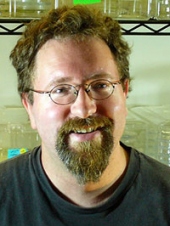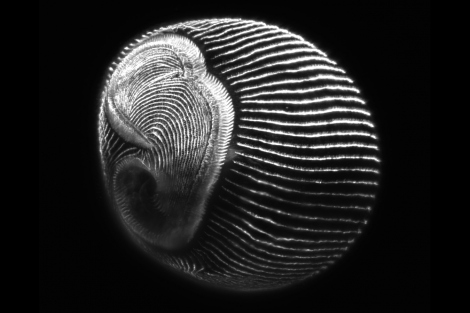Science In Focus: New Mysteries in the Genome of Stentor
Single-Celled Giant Could Reveal Biological Secrets of Cellular Regeneration
Look under a microscope at the water from any pond in San Francisco’s Golden Gate Park and you’ll likely encounter Stentor – a giant single-celled organism with remarkable regenerative abilities. Cut Stentor in half, and the tail will grow a new head, while the head grows a new tail, and two somewhat downsized Stentors will go on as before.
Science in Focus
This story is part of a series highlighting the beauty of science at UCSF and the groundbreaking research taking place behind each image.
To help unlock Stentors’ regenerative abilities, a team of scientists led by Wallace Marshall, PhD, of UC San Francisco, and Scott W. Roy, of San Francisco State University, has sequenced Stentor’s genome for the first time.
The researchers – who published their findings Feb. 9, 2017, in Current Biology – believe that understanding Stentor’s regenerative abilities could lead to new insights about how to help our own cells and tissues recover from injury.
Surprise Findings in the Genome
Capable of growing up to 2 millimeters in length Stentor is one of the largest known independently living cells on the planet. Named for their trumpet-like appearance,Stentor has a large triangular head with a mouth full of waving cilia and a long flexible tail that it uses to attach to floating leaves and debris while it feeds.
“I’ve been interested in Stentor since I was a kid,” said Marshall, a professor of biochemistry and biophysics at UCSF. “I used to put pond water samples under a microscope then go the library to learn about the organisms I could see. When I read about this giant Stentor creature that could completely regenerate itself, I felt like I was clearly not understanding something fundamental about biology. It took a number of years before I realized there are mysteries here that no one understands.”

Marshall and his collaborators – Pranidhi Sood, PhD; postdoctoral researchers Mark M. Slabodnick, PhD; J. Graham Ruby, PhD; and Sarah B. Reiff, PhD – immediately made a surprising discovery when they looked at the newly sequenced Stentor genome. Genes are typically broken up by inert DNA “spacers” called introns. In humans these introns are as many as 100,000 DNA “letters” long, but in Stentor they are only 15 letters long, the shortest introns of any species studied to date.
The only other organisms with introns close to this short are simple parasites that have mostly dispensed with their own genetic functions and are completely dependent on their host. The fact that large, complex, independent Stentor has even shorter introns raises many new questions about the biological importance of introns and how they influence the larger picture of genomics.
The sequencing project also discovered other surprises in the structure of Stentors’ genome – for instance the fact that larger Stentors have more copies of their genome than smaller Stentors.
How Do the Genes ‘Know’?
The larger mystery about Stentor, to Marshall, is how molecule-size genes detect and repair damage to a complex, millimeter-size cell.
Stentor is much larger and more complex than most independently living single-celled organisms: 1,000 times larger than most bacteria, and 10 times larger than the average amoeba, and more anatomically specialized than either. It’s not clear how genes can build such a complex cell without the outside influences that shape the more elaborate cells of multicellular organisms like worms or even humans.

Stentor’s ability to regenerate depends on the fact that it keeps hundreds of thousands of copies of its genome spread across its body — many times more than the two copies of the genome stored in each human cell nucleus. This extreme redundancy means that any part of Stentor contains instructions for rebuilding the rest. But a major question remains: how do the genes in the tail know to grow a new head and the genes in the head know to grow a new tail?
Marshall looks forward to tackling these and many more unanswered questions about Stentor’s remarkable abilities. He picks up a copy of a 1961 edition of The Biology of Stentor on his desk and flips through its gorgeous illustrations of microscopic dissections. “This is the last definitive work on Stentor biology,” he says. “This is what I love about looking at Stentor’s genome: basically, nothing is known at a molecular level.”
Marshall said he doesn’t yet know what the new findings about the Stentor genome mean. “But as far as I can tell, no one else does either. It’s clear that our understanding of this biology is still missing something big.”